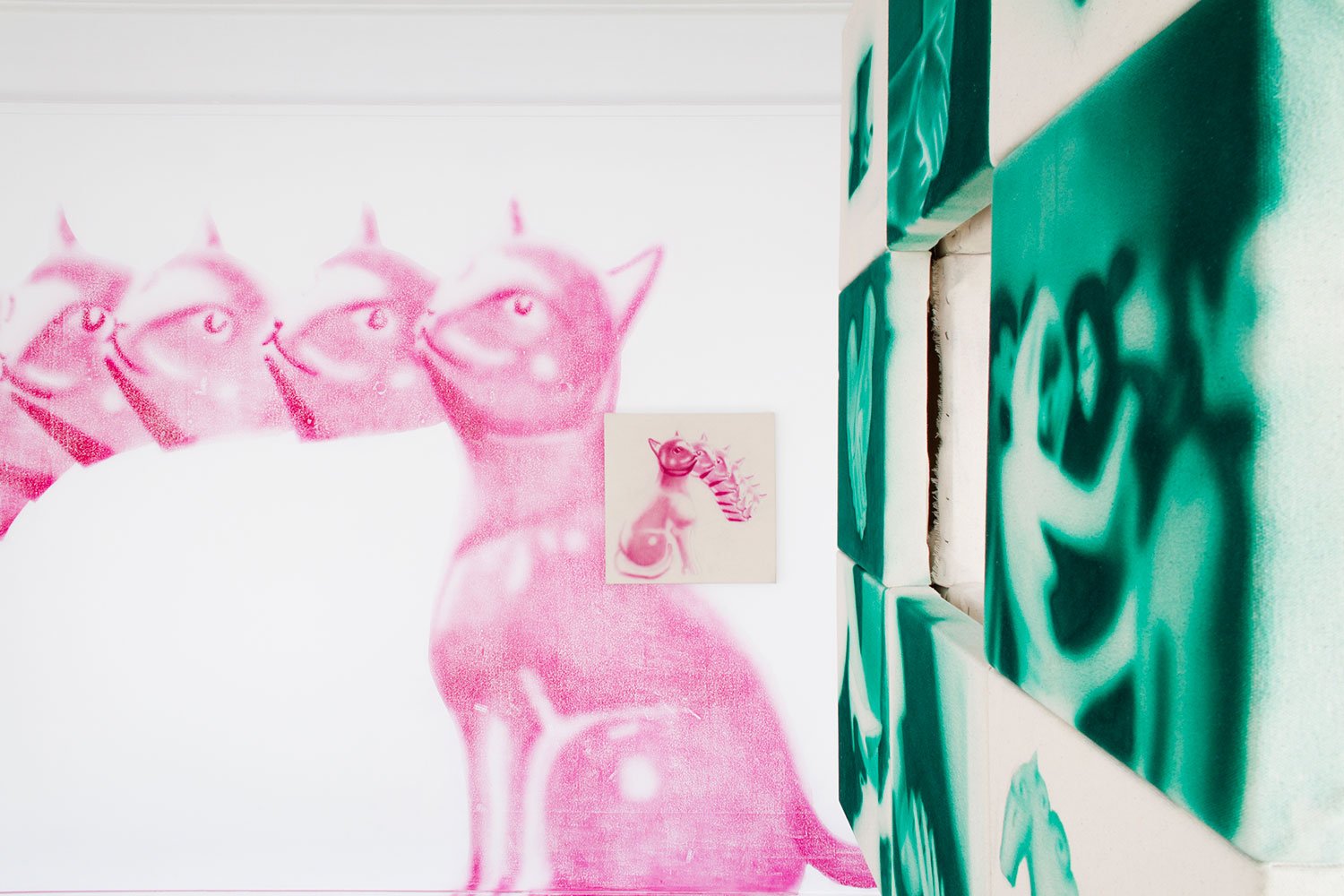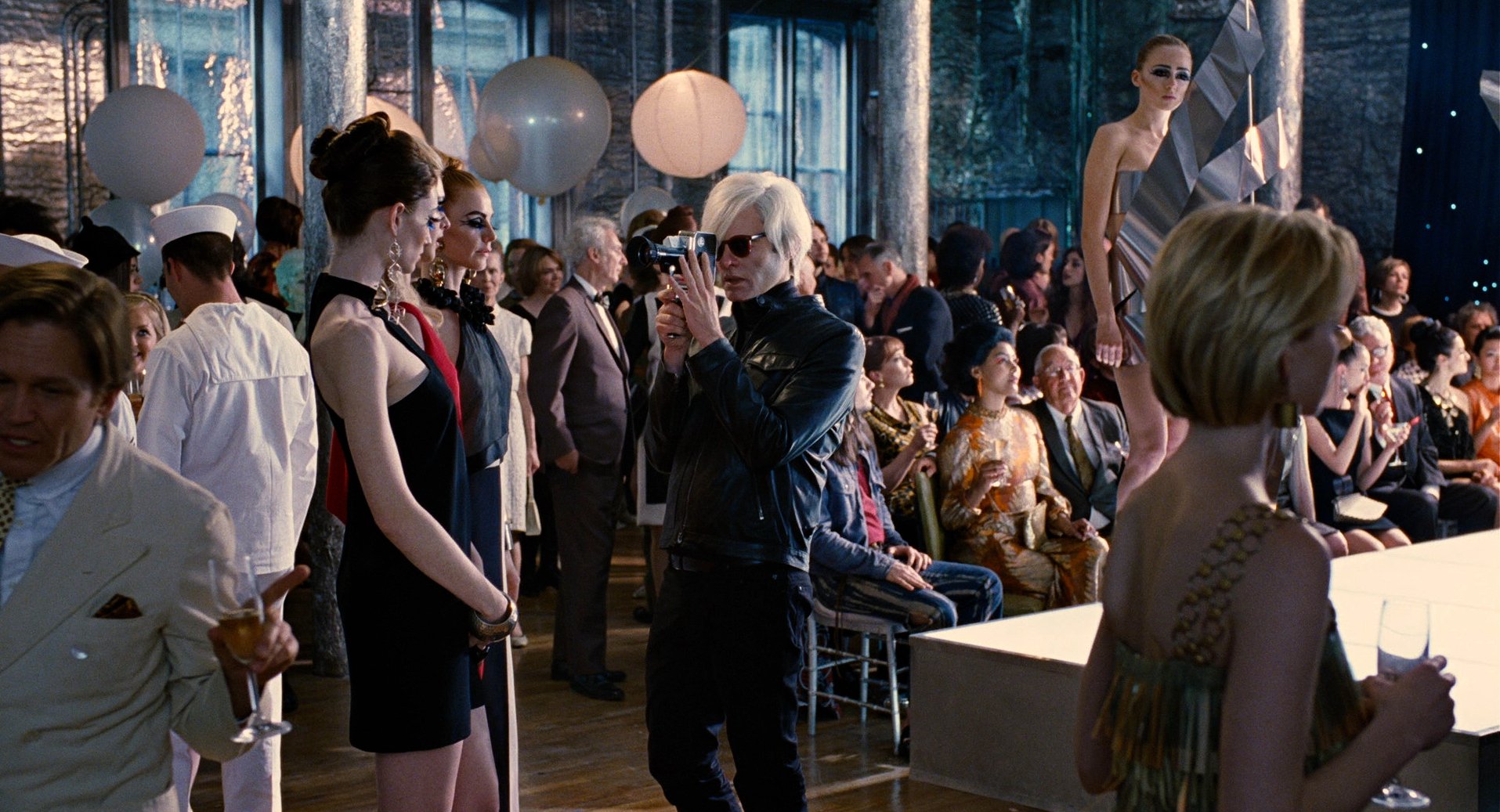Ragini and her nine wives
Photography throughout: Tarika Sabherwal, Ragini and her nine wives. Installation view, RM Gallery + Project Space, Tāmaki Makaurau, March 2024. Photo: Ardit Hoxha
The attempt to visualise what is audible gave birth to the concept of Ragamala (garland of Ragas) Paintings. The Ragamala miniature painting tradition combines poetry and painting by giving a visible form to music. — Bhoomika Dwivedi and Madan Singh Rathore
A ragini is the feminine counterpart to a raga—music that tells stories and then those stories are made into paintings. Small scenes of men, women, deities, animals, forests, flowers, water, relationships, fondness, and solitude. These songs and paintings usually tell of man and wife, a played out bit developed over centuries.
Ragini and her nine wives queers and modernises the ragini; its themes of love, intimacy and romance. The ragas, who each have five wives, feel small in comparison to the love and intimacy that Ragini has for her nine. In this reimagining, Ragini is a deity. Within her polygamist paradise, there is an abundance of opulence and passion. She dances with her wives, caressing their hands and arms to lead them to the dancefloor. She is soft, but dominant. Leading the dance.
Ragini holds her wife close. Her hair is thick and long, held behind her ears to show her adorned lobes. She looks down at the mouth of her wife, allowing their heads to meet and lean against each other in support of one another's weight. They sway gently as if they are hypnotised. She feels the bare skin of her wife’s elbow, as the palm of her hand cradles the joint. The music has the pace of a lullaby. It orbits the women, sometimes finding itself intertwined with them, coaxing them to move at its mesmerising speed. Blue and pink lights survey the room, casting their gaze on the bodies meandering across the dancefloor. They circle around the couple and at one stark moment engulf them.
Ragini’s wife is submerged in a blinding pink glow, masking her intricate details: only her silhouette can be seen. She becomes a rose coloured shadow of herself. The pale blue light hits Ragini’s back, immediately darkening her face. The bright light temporarily burns her wife’s eyes and in that moment all she can see is the glow of her hair. The light shows each short strand that refuses to lay down flat onto her mane. The blue beam reflects off her gold arm bands, creating an iridescence so grand and unnatural that it could only be omitted from the body of a godly being. Her wife mimics the grasp the bangles have on Ragini. Her finger wraps around her arm with the doughy flesh cushioning her gentle grip. Their matching golden brown bodies twirl around each other and their long hair sways at their backs. Incredibly rare, remarkable, unearthly beauty, the kind that is difficult to not gawk at.
Ragini checks her makeup in a small mirror that is made to fit in a small pocket. The light reflects off the metal hoop that pierces her left nostril. Pleased with what she sees she gives herself a coy and gentle smirk. Admiring her arched full lips and her hooded lids.
Her other wives are amongst the crowd. Moving with the flood of people, trying to wait with subtlety for their time to be held by Ragini. Some dancing to fill the time, others standing still at the peripheries of the room. Each of them offer her something slightly different. Their scents vary, their lips of varied sizes and softnessness, their eyes of different shapes, but what they have in common is who they are fixed upon. It is Ragini. Their godly lover, partner, and protector.
Each wife gets to have her time with Ragini at this gathering. She reaches out her hand to each of them to signal that it is finally their turn. Their chance to be with her. Some hands meet as gently as the grazing of their fingertips. Another hand is held as if it is being led forward, bringing its owner with it, pulling them away from their solitary spot. These hands are in a courtship, building in intensity and intimacy as they become more familiar with each other, as the bodies they’re attached to ease into moving as a united pair. Shoes and arms move messily around them, awkward and flailing, but Ragini and her wives remain poised. Transfixed on each other, matching each other's pace and breath. Lights follow them, sometimes pink, sometimes blue, sometimes green, but always catching the pairs in an intimate moment before their lips are to touch, eyes gently closed.
One of Ragini’s more reserved wives stands completely still, leaning against the wall. Drink in her right hand, while her other cradles her right bicep. She tries keeping her body and her emotions safe by creating a fleshy barrier between her chest and the room. Ragini notices her curling into herself and moves toward her. She squeezes herself between her wife’s back and the wall. Entrapping her body, pressing the centre of her rib cage as close as she can get to her wife’s spine. Ragini’s arms swaddle her, securing her wife's hands to her elbow and together they sway like this. Becoming close and warm with some gentle coaxing.
The pink cat on the wall of the dancehall watches as all of these women find and lose each other in the crowd. Its nine lives are shown in a staggered repeated shadow, each connected to its previous iteration, becoming slightly more distorted as its previous duplicate. These lives are not identical. They have iterations that exist in another realm on another plane, where each wife has a different reality. Each mirrored version lingers around this room and Ragini, denying her magnetic force, which in this world keeps her wives rotating around her on the dancefloor.


















Fergus Porteous on Rangi White’s Whakapapa Plasticus; Grace, 29 February – 30 March 2024.